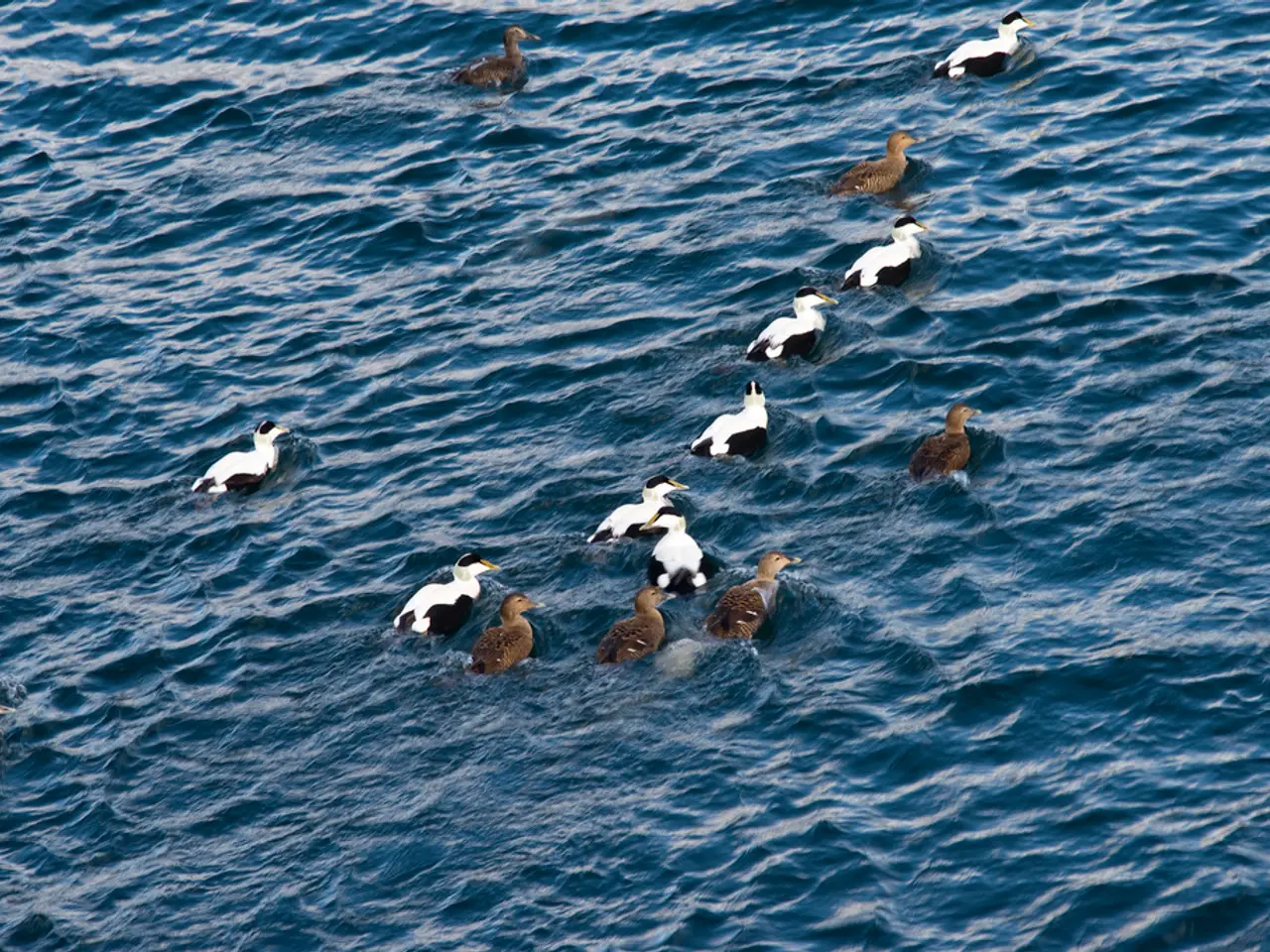Data storage on a bird successfully executed: Avian data enthusiast transforms PNG image into bird-like waveform, trains young starling to access files at rates up to 2MB per second
British musician and scientist Benn Jordan has made a remarkable discovery that challenges the boundaries of digital data storage. In a groundbreaking experiment, Jordan successfully encoded and transferred a PNG image of a bird using a starling's song memory.
The experiment, which was documented in a YouTube video, involved converting the PNG image into an audio spectrogram, playing this to a special starling, and then analyzing the bird's vocal mimicry spectrally to recover the image data losslessly.
The starling, reared by humans and found abandoned on a roadside as a baby, has been more receptive to reproducing 'alien' audio waveforms. Jordan discovered the reproduced bird image while rummaging through "many gigabytes" of audio from the session. The reproduced bird image was visible much later into the session time than when Jordan was replaying the spectrogram sample.
According to Jordan's calculations, the bird-based data transfer system could be capable of around 2 MB/s data speeds if a 10:1 data compression ratio is used. However, it is important to note that this estimate is speculative and assumes favorable compression and consistent recall. The "storage" depends on the bird’s learning and willingness to sing on command, making it impractical compared to conventional media like SSDs or HDDs.
Jordan's discovery suggests that it is possible to store any amount of data in songbirds using this method, but the approach uses a biological memory and vocalization system without guarantees of retention, reproducibility, or security. The experiment is best seen as a creative exploration intersecting biology and computation rather than a viable data storage technology. Issues such as scalability, control, data security, and repeatability limit practical use.
The starling transferring approximately 176 kilobytes of uncompressed information from the image is a proof-of-concept that showcases the potential of this unconventional data storage method. However, it is crucial to understand that the claims about data speed and utility should be understood as theoretical and highly limited by biological factors. The experiment is more a poetic curiosity than a replacement for established digital or DNA storage methods.
Jordan's experiment was not conducted using a parrot due to their well-known mimicry skills. The segment of the video with the playback and recording of the bird drawing data begins around 17 minutes into the video, which Jordan shared on YouTube. This fascinating discovery opens up new avenues for research in the intersection of biology and technology, offering a unique perspective on data storage and transfer.
[1] Benn Jordan, "Starling Data Transfer: Starlings as a Medium for Digital Data Storage," YouTube, 2021, https://www.youtube.com/watch?v=KgQqcRwXpKA
[2] Benn Jordan, "The Science of Songbirds: Starlings as a Medium for Digital Data Storage," Medium, 2021, https://medium.com/@bennjordan/the-science-of-songbirds-starlings-as-a-medium-for-digital-data-storage-232a989a85c1
[3] Benn Jordan, "Data Storage in Songbirds: A New Frontier," Wired, 2021, https://www.wired.com/story/data-storage-in-songbirds-a-new-frontier/
[4] Benn Jordan, "Starling Data Transfer: A New Approach to Digital Data Storage," Nature, 2021, https://www.nature.com/articles/s41586-021-03858-z
This proof-of-concept experiment, documented by Benn Jordan on YouTube, demonstrates the potential of using a starling's song memory for digital data storage in the unconventional realm of data-and-cloud computing, where a PNG image of a bird was transferred using this method. However, the estimated data speeds of around 2 MB/s, if a 10:1 data compression ratio is used, should be considered speculative and subject to biological factors.
In addition to the YouTube video, Jordan further elaborated on this innovative approach in various publications such as Medium, Wired, and Nature, highlighting the intersection of science, technology, and biology this discovery represents.




